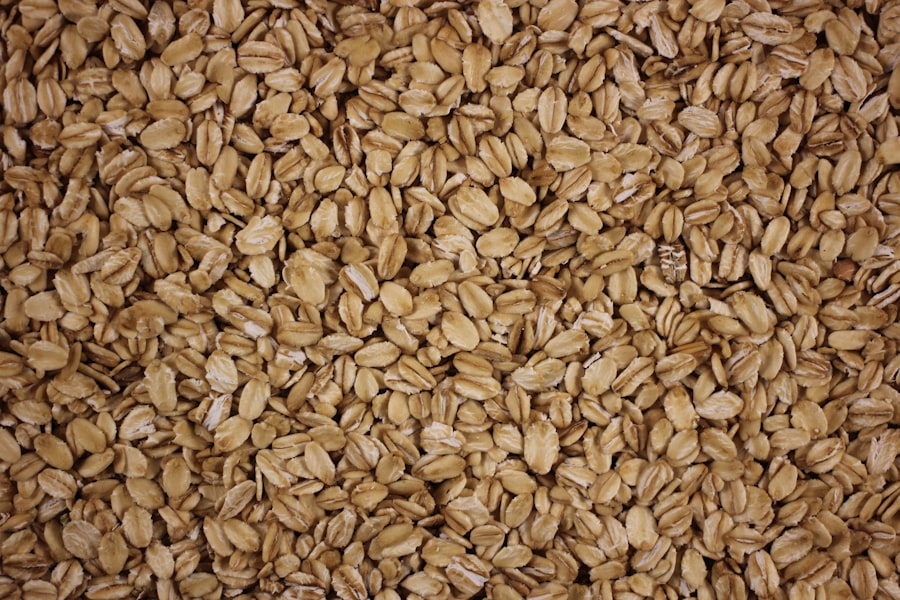The Soviet Union, a vast and complex entity that existed from 1922 to 1991, was marked by its ambitious goals of self-sufficiency and agricultural prowess. However, despite its extensive land and resources, the Soviet Union became increasingly dependent on grain imports, particularly during the latter half of the 20th century. This dependency not only shaped the agricultural policies of the state but also had far-reaching implications for its economy, politics, and society.
Understanding the nuances of this dependency provides insight into the challenges faced by one of the most significant superpowers of the 20th century. The reliance on grain imports was not merely a matter of economic necessity; it was also a reflection of the broader systemic issues within the Soviet agricultural sector. The state’s attempts to modernize agriculture through collectivization and mechanization often fell short, leading to chronic food shortages and a reliance on foreign grain.
This paradox of a nation with vast agricultural potential needing to import food raises questions about the effectiveness of its policies and the underlying factors that contributed to this dependency.
Key Takeaways
- The Soviet Union heavily relied on grain imports due to limitations in domestic production and agricultural inefficiencies.
- Economic challenges arose from this dependency, affecting the stability and growth of the Soviet economy.
- Political tensions and international relations were influenced by the need to secure grain supplies from foreign countries.
- Various strategies were implemented to reduce reliance on imports, including agricultural reforms and diversification efforts.
- The grain import dependency had significant social, cultural, and environmental impacts within the Soviet Union.
Historical Background of Soviet Union’s Grain Production
The history of grain production in the Soviet Union is a tale of ambition, struggle, and transformation. Following the Bolshevik Revolution in 1917, the new government sought to overhaul the agricultural landscape through collectivization. This process aimed to consolidate individual landholdings into collective farms, which were believed to be more efficient and capable of producing surplus grain.
However, the transition was fraught with challenges, including resistance from peasants and widespread famine, particularly during the early 1930s. Despite these setbacks, the Soviet Union made significant strides in agricultural production during the mid-20th century. The introduction of advanced farming techniques and machinery, coupled with state support for large-scale farming operations, initially led to increased grain yields.
However, these gains were often inconsistent and heavily reliant on favorable weather conditions. By the late 1970s and early 1980s, it became evident that the Soviet agricultural system was struggling to meet the demands of its population, leading to an increased reliance on imports to fill the gap.
Factors Contributing to Soviet Union’s Grain Imports Dependency

Several interrelated factors contributed to the Soviet Union’s growing dependency on grain imports. One primary issue was the inefficiency of collective farming practices. While collectivization aimed to streamline production, it often resulted in bureaucratic mismanagement and a lack of incentives for farmers.
The disconnect between state planners and local agricultural realities led to poor decision-making and inadequate responses to changing conditions. Additionally, climatic challenges played a significant role in shaping grain production outcomes. The vast expanse of Soviet territory encompassed diverse climates, but many key agricultural regions were prone to droughts or harsh winters.
As domestic production faltered, the Soviet leadership increasingly turned to international markets for grain supplies.
Impact of Grain Imports Dependency on Soviet Economy
| Year | Grain Imports (Million Tons) | Percentage of Total Grain Consumption | Impact on Soviet Economy | Notes |
|---|---|---|---|---|
| 1970 | 5 | 3% | Minimal dependency; economy largely self-sufficient | Domestic grain production was stable |
| 1975 | 15 | 8% | Growing reliance on imports; increased foreign currency expenditure | Poor harvests led to increased imports |
| 1980 | 30 | 15% | Significant dependency; strain on trade balance and foreign reserves | Grain imports became critical for food supply |
| 1985 | 40 | 20% | High dependency; economic vulnerability to global market fluctuations | Increased imports due to agricultural inefficiencies |
| 1990 | 50 | 25% | Severe dependency; contributed to economic instability and food shortages | Collapse of agricultural sector and political turmoil |
The economic implications of grain imports dependency were profound and multifaceted. On one hand, reliance on foreign grain created vulnerabilities within the Soviet economy. Fluctuations in global grain prices could lead to significant financial strain, as the state had to allocate substantial resources to secure imports.
On the other hand, the need for imports diverted attention and resources away from domestic agricultural development. The focus on securing foreign grain often overshadowed necessary investments in improving local farming practices and infrastructure.
As a result, while short-term needs were met through imports, long-term sustainability remained elusive. This cycle of dependency ultimately hindered economic growth and contributed to broader systemic issues within the Soviet economy.
Political Implications of Soviet Union’s Grain Imports Dependency
The political ramifications of grain imports dependency were significant and complex. Domestically, it fueled discontent among citizens who faced food shortages and rising prices. The government’s inability to provide adequate food supplies became a source of frustration and criticism, undermining public confidence in the Communist Party’s ability to manage the economy effectively.
This dissatisfaction was particularly pronounced during periods of crisis when imported grain supplies were disrupted. Internationally, the Soviet Union’s reliance on grain imports influenced its foreign policy decisions. The need for stable grain supplies often led to strategic partnerships with countries that could provide these resources.
This dynamic sometimes resulted in compromises on other political issues, as securing food became a priority over ideological alignments. The interplay between agricultural needs and foreign relations highlighted how domestic issues could shape international strategies.
Strategies for Mitigating Soviet Union’s Grain Imports Dependency

In response to its growing dependency on grain imports, the Soviet leadership implemented various strategies aimed at bolstering domestic production. One approach involved investing in agricultural technology and infrastructure improvements. The government sought to modernize farming equipment and enhance irrigation systems to increase crop yields.
These initiatives aimed not only to reduce reliance on imports but also to improve overall food security. Additionally, there were efforts to incentivize local farmers through subsidies and support programs. By providing financial assistance and resources, the state hoped to encourage greater productivity among collective farms.
However, these measures often faced challenges due to entrenched bureaucratic practices and resistance from farmers who were skeptical of state interventions. Despite these obstacles, some progress was made in increasing domestic grain production during certain periods.
International Relations and Soviet Union’s Grain Imports Dependency
The international dimension of the Soviet Union’s grain imports dependency cannot be overlooked. As a major player in global politics, the USSR’s need for grain shaped its relationships with other countries. For instance, during times of crisis, such as poor harvests or economic sanctions, the Soviet Union sought out allies who could provide essential food supplies.
This often led to complex negotiations that intertwined agricultural needs with broader geopolitical considerations. Moreover, the USSR’s dependence on foreign grain created opportunities for other nations to leverage their agricultural exports for political gain. Countries like the United States and Canada recognized this vulnerability and sometimes used it as a bargaining chip in diplomatic negotiations.
The interplay between agricultural trade and international relations underscored how domestic agricultural policies could have far-reaching implications beyond national borders.
Social and Cultural Effects of Soviet Union’s Grain Imports Dependency
The social consequences of grain imports dependency were deeply felt across Soviet society. Food shortages became a common experience for many citizens, leading to long lines at stores and a pervasive sense of uncertainty regarding access to basic necessities. This situation fostered a culture of scarcity that permeated daily life, influencing social interactions and community dynamics.
Culturally, the reliance on imported grain also affected traditional practices related to food production and consumption. As domestic agriculture struggled, many people turned to alternative sources for sustenance, which sometimes meant abandoning traditional recipes or local ingredients in favor of imported goods. This shift not only altered dietary habits but also impacted cultural identity as food became increasingly commodified and less tied to local customs.
Environmental Consequences of Soviet Union’s Grain Imports Dependency
The environmental implications of the Soviet Union’s grain imports dependency were significant and multifaceted. The focus on increasing agricultural output often led to unsustainable farming practices that degraded soil quality and depleted natural resources. Intensive farming methods employed in an attempt to boost production resulted in soil erosion and loss of biodiversity, further exacerbating long-term agricultural challenges.
Moreover, reliance on imported grain necessitated extensive transportation networks that contributed to environmental degradation. The carbon footprint associated with transporting large quantities of grain across borders added another layer of complexity to an already strained ecological landscape. As environmental concerns grew globally during the latter part of the 20th century, the Soviet Union’s agricultural practices came under scrutiny for their impact on both local ecosystems and global climate patterns.
Comparison with Other Countries’ Grain Imports Dependency
When examining the Soviet Union’s grain imports dependency, it is instructive to compare it with other nations facing similar challenges. For instance, countries like Egypt and Japan have historically relied on imported grains due to limited arable land or unfavorable climatic conditions. However, these nations often implemented more effective policies aimed at diversifying their food sources or investing in sustainable agricultural practices.
In contrast, the Soviet Union’s approach was often characterized by rigid state control and an inability to adapt quickly to changing circumstances. While other countries sought innovative solutions or partnerships to address their food security needs, the USSR frequently found itself trapped in a cycle of dependency without sufficient flexibility or responsiveness in its policies.
Conclusion and Future Outlook for Soviet Union’s Grain Imports Dependency
In conclusion, the Soviet Union’s dependency on grain imports was a complex issue rooted in historical practices, economic challenges, political dynamics, and social consequences. While efforts were made to mitigate this reliance through modernization initiatives and international partnerships, systemic inefficiencies continued to hinder progress toward self-sufficiency. Looking ahead, had the Soviet Union persisted beyond its dissolution in 1991, addressing this dependency would have required a fundamental rethinking of agricultural policies and practices.
Emphasizing sustainability, innovation, and responsiveness would have been crucial in creating a resilient agricultural sector capable of meeting both domestic needs and global challenges. Ultimately, understanding this aspect of Soviet history offers valuable lessons for contemporary discussions about food security and agricultural sustainability worldwide.
The Soviet Union’s dependency on grain imports was a significant aspect of its agricultural policy, reflecting the challenges faced by its collective farming system. For a deeper understanding of the implications of this dependency, you can read more in the article available at this link. This article explores the historical context and the economic factors that contributed to the Soviet Union’s reliance on foreign grain supplies.
WATCH THIS 🛑 The $10 Trillion Lie: How The USSR Was Bankrupt 10 Years Before It Fell
FAQs
What was the Soviet Union’s dependency on grain imports?
The Soviet Union was heavily dependent on grain imports, especially during the 1970s and 1980s, to meet domestic food demand due to insufficient agricultural production.
Why did the Soviet Union need to import grain?
The Soviet Union faced challenges such as poor soil quality in many regions, harsh climate conditions, inefficient farming practices, and low agricultural productivity, which led to frequent grain shortages and the need for imports.
From which countries did the Soviet Union import grain?
The Soviet Union primarily imported grain from countries like the United States, Canada, Argentina, and Australia.
How did grain import dependency affect the Soviet economy?
Grain import dependency strained the Soviet economy by requiring significant foreign currency reserves and affecting trade balances. It also exposed the USSR to global market fluctuations and political pressures.
Did the Soviet Union attempt to reduce its grain import dependency?
Yes, the Soviet government implemented various agricultural reforms and invested in modernization efforts to increase domestic grain production, but these measures had limited success.
What role did grain imports play in Soviet foreign relations?
Grain imports were a significant factor in Soviet foreign relations, as trade agreements for grain often influenced diplomatic ties, especially with Western countries during the Cold War.
When did the Soviet Union’s grain import dependency become most pronounced?
The dependency became most pronounced in the 1970s and 1980s, particularly after poor harvests and increased domestic demand.
How did grain import dependency impact Soviet citizens?
Grain shortages and dependency on imports sometimes led to food rationing, reduced availability of staple foods, and contributed to public dissatisfaction with the government’s agricultural policies.
